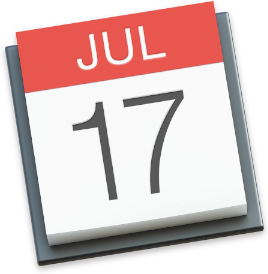In recent years, the tech community has seen a surge in popularity of apps which utilize the latest technology to link supply and demand in previously impossible ways. These apps have been deemed “Sharing Economy” apps and are shaking up not only the tech sphere, but the verticals in which each app operates. In an article at Forbes, Joe Kraus (a general partner at Google) says: “The sharing economy is a real trend. I don’t think this is some small blip.”
Previously, if you needed a taxi in the city, you would have to either wave one down or call a taxi company. Now with Uber, not only is a certified driver a tap away: payment is paperless, you can rate your driver, track his progress to your pick-up location in real-time, and, on top of all that, you can DJ your ride using Spotify.
Uber is among the most popular and successful sharing economy apps. It recently received a $1.2 billion investment and is currently valued at $17 billion. As astonishing as these numbers are, Uber gets even more shocking upon closer examination. Uber revenue is doubling every six months. That revenue is coming primarily from only five cities in which the app is well-established. Uber has been introduced in 125 additional cities where it hopes to develop into a mature business.
Only four years after its launch, Uber has made a major impact in public transportation and has incited widespread protests both internally from it’s workers and externally from taxi drivers. While the exceptional growth of the company has caused controversy, one thing is for sure: users love it.
Like Uber, Airbnb is also among the leading sharing economy apps. Airbnb connects tourists who need a place to stay and locals with extra rooms. Airbnb not only cuts out the middleman of hotels, it also encourages the formation of connections. The idea of Airbnb creating a community is a major part of their marketing strategy.
Airbnb recently received a $13 billion valuation, making it the second most valuable private company in the Silicon Valley to Uber. Airbnb has also received it’s share of controversy. New York is a hotbed for both Airbnb users and residents frustrated with the patrons of the new service. San Francisco also represents a major beacon of Airbnb usage. SF mayor Ed Lee recently signed legislation which made short term rentals of 30 days or less legal with a 14.5 percent hotel tax.
While both Uber and Airbnb are among the fastest growing companies in the nation, The New York Times recently argued that the one thing they have in common is the willingness to take risks. The same article claims Uber employed a surge of drivers in their rise to prominence and asked them to push any damage claims through their personal insurance companies despite the fact that most personal insurance companies don’t cover commercial activity.
Airbnb recently announced they will offer free $1 million liability coverage for its tens of thousands of US listings in 2015; however, this insurance will be secondary. Like Uber, Airbnb expects hosts to go through their personal insurance companies first.
Airbnb and Uber aren’t the only sharing economy apps on the rise. In fact, there’s been a massive flood of sharing economy apps pushing “collaborative consumption.” Chegg allows students to rent or buy college textbooks on the cheap. Lyft, an alternative to Uber, is described by co-founder John Zimmer as: “Your friend with a car on demand.” ParkAtMyHouse.com allows people in the UK to rent out parking spaces in their driveways. Getaround allows you to search for cars in your area which you can rent hourly or daily. Timebanks allows users to trade an hour of work in their specialty for an hour of work in another’s specialty. In other words, a cook can trade an hour of cooking to a plumber for an hour of plumbing.
These sharing economy apps all run with varying levels of success, but the underlying idea of “collaborative consumption” is what has tech gurus inspired. Collaborative consumption is how each of these apps works. According to Greenopedia, collaborative consumption is: “a global concept that involves sharing, bartering, lending, trading, renting, gifting, and swapping goods instead of buying them.” It’s disruptive to the standard business model of supply and demand.
The ideology behind the sharing economy and collaborative consumption is potentially revolutionary—especially as sustainability continues to rise in prominence as a global issue. It conveniently connects consumers to what they desire on the cheap, cutting out the middleman. Rachel Botsman claims it leverages technology to allow us to interact and transact in a way which is more natural to our species. It creates an economy of trust. And as evidenced by Uber and Airbnb, if one can find the right niche, it can also mean big business.
For more on Sharing Economy apps and the idea of “collaborative consumption,” check out these incredibly insightful 2010 and 2012 Ted Talks by Rachel Botsman.
At Mystic Media, we are constantly on the lookout for the next big vertical. We’re experts in all things web, mobile, application, social media and marketing. To learn more about our services, contact us today by clicking here, or by phone at 801.994.6815


